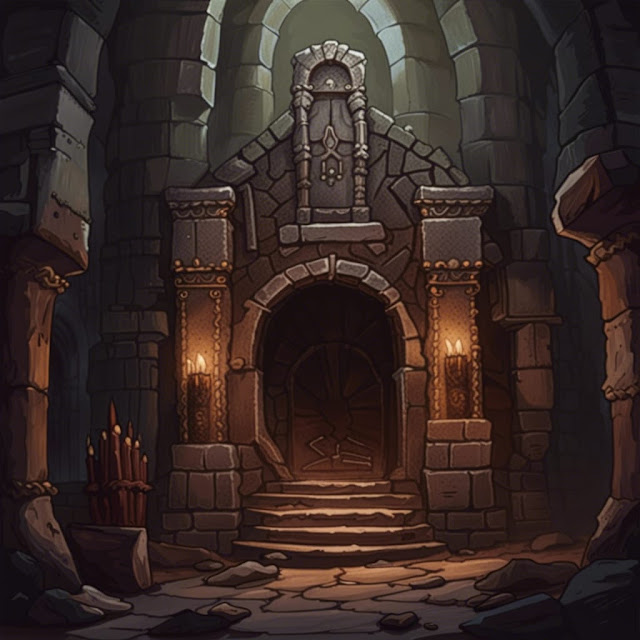The gaming magazine is dead. After all, when was the last time that you were able to purchase a gaming magazine at your nearest newsagent? Games Workshop’s White Dwarf is of course the exception, but it has been over a decade since Dragon appeared in print. However, in more recent times, the hobby has found other means to bring the magazine format to the market. Digitally, of course, but publishers have also created their own in-house titles and sold them direct or through distribution. Another vehicle has been Kickststarter.com, which has allowed amateurs to write, create, fund, and publish titles of their own, much like the fanzines of Kickstarter’s ZineQuest. The resulting titles are not fanzines though, being longer, tackling broader subject matters, and more professional in terms of their layout and design.
—oOo—

The first thing you notice about
Dungeons & Dragons Adventurer Issue 1 is the dice. Of course, you are meant to. A set of black polyhedral dice with red lettering in a silver tin on a red cardboard background. It stands out. After all, what gamer does not like a set of dice? And they are nice dice. They sit on the front of the first issue of
Dungeons & Dragons Adventurer, a partwork from
Hachette Partworks Ltd. A partwork is an ongoing series of magazine-like issues that together form a completed set of a collection or a reference work. In the case of
Dungeons & Dragons Adventurer, it is designed to introduce the reader to the world and the play of
Dungeons & Dragons, specifically,
Dungeons & Dragons, Fifth Edition. With the tag line, ‘Learn – Play – Explore’, over the course of multiple issues the reader will learn about
Dungeons & Dragons, how it is played and what options it offers, the worlds it opens up to explore, and support this with content that can be brought to the table and played. Over the course of eighty issues, it will create a complete reference work for
Dungeons & Dragons, Fifth Edition, provide scenarios and adventures that can be played, and support it with dice, miniatures, and more.
Dungeons & Dragons Adventurer Issue 1 does not come with the dice. There the first issue of the magazine, there is the ‘Introduction to Combat’, there are four ready-to-play character sheets, and there is advertising. The main item is
Dungeons & Dragons Adventurer Issue 1. Future issues of the partwork will include secretions dedicated to the seven gameplay elements—‘Sage Advice’, ‘Character Creation’, ‘The Dungeon Master’, ‘Spellcasting’, ‘Combat’, ‘Encounters’, and ‘Lore’—of Dungeons & Dragons, Fifth Edition, but
Dungeons & Dragons Adventurer Issue 1 concentrates on ‘Sage Advice’, ‘Character Creation’, and ‘Lore’. This starts with the basics of play, ‘The World of D&D’, ‘The Structure of Play’, and more… Notably, in ‘The World of D&D’ it mentions several worlds, including Dark Sun and Ravenloft, but notes that the Forgotten Realms is where all of the adventures to come in
Dungeons & Dragons Adventurer will be set. It mentions the origins of the roleplaying game too and its creators, alongside a photograph of the original
Dungeons & Dragons. Then it explains the ‘Structure of Play’, how the dice work and the concept of Difficulty Classes, the role of the Dungeon Master, and then it breaks down the elements of a Player Character, including Species and Class, equipment, and more. This includes the backgrounds for the four pre-generated Player Characters included in
Dungeons & Dragons Adventurer Issue 1. There is advice too, throughout. Some of this is done in ‘Top Tip’ boxes, split between those for the Dungeon Master and those for the player. For example, a ‘DM Tip Top’ gives advice on how to present an NPC using a one sentence description and motivation, whilst a player ‘Top Tip’ suggests that he think about not just his character’s best qualities and abilities, but also his worst, in particular, as a means to aid in roleplaying the character. Elsewhere the advice is more general, covering aspects such as the Session Zero, the lack of necessity to know all of the rules to play and run the game, and rolling the dice behind the screen. The latter is perhaps the most controversial piece in
Dungeons & Dragons Adventurer Issue 1 suggesting as it does that the Dungeon Master use a screen to anonymise her dice results in order to prevent an unnecessary party death if she is rolling particularly well.
Is this good advice? Well, yes and no. Yes, because you do not want the players to necessarily fail on their first encounter or exposure to
Dungeons & Dragons, Fifth Edition and because if they do, there is no real advice as to what to do next in the pages of
Dungeons & Dragons Adventurer Issue 1 in the event of Player Character death. Yes, because the publisher wants the Dungeon Master and her players to remain interested in Dungeons & Dragons, Fifth edition, and thus,
Dungeons & Dragons Adventurer. Yet no because it is not entirely fair on the game itself which relies on the randomness of the dice rolls and the possibility of death is part of the game itself. It will be interesting to see how this issue is addressed in future issues.
The ’Lore’ section in
Dungeons & Dragons Adventurer Issue 1 describes the town of Phandalin, the location for the scenario from the original
Dungeons & Dragons Starter Set and also the more recent release from Wizards of the Coast,
Phandelver and Below – The Shattered Obelisk. It gives a one-page introduction to the town in readiness for the ‘New & Exclusive Adventure’ in
Dungeons & Dragons Adventurer Issue 1, which is more of a detailed Encounter rather than a full adventure. It is, nevertheless, described as ‘Adventure 1 – 1 King of the Hill’, so that suggested that there is more of the adventure to come. ‘King under the Hill’ is set in the Stonehill Inn in Phandalin. It is intended to be played in one or two hours and involves a mix of combat and exploration with a little roleplaying thrown in. It is clearly explained, involves just the two linked monsters, and as with the rest of the magazine, there are DM Top Tips throughout such as describing particular feature of one of the monsters and reminding the Dungeon Master should describing the scene for her players and asking them what they want to do next. It is all clearly presented and easy to read from the page. In addition, the events of ‘King under the Hill’ are tied into
Phandelver and Below – The Shattered Obelisk so that a Dungeon Master could add this encounter to that campaign if she wanted.
In comparison to the rest of
Dungeons & Dragons Adventurer Issue 1, the included bonus ‘Introduction to Combat’ booklet is digest sized and has wire hoops to help it sit in the binders designed for the partwork. In eight pages, the booklet takes the reader through ‘The Rules of Engagement’, covering surprise, establishing positions, initiative, actions such as attacking, casting spells, helping, hiding, and more, before explaining Hit Points and damage and its effects. Then, in the ‘Combat Example’ it gives an example of combat using the pre-generated Player Characters included with
Dungeons & Dragons Adventurer Issue 1 and the scenario, ‘King under the Hill’. It is designed to show how a round or two of combat could play out rather than should.
The four Player Characters in
Dungeons & Dragons Adventurer Issue 1 have their own sheet each. They include a Human Rogue with the Charlatan background, a Hill Dwarf Cleric with the Acolyte background, a Wood Elf with Outlander background, and a Halfling Wizard with the Sage background. They are done on standard
Dungeons & Dragons character sheets and are completely filled with all of the details needed to play, including a range of spells for both the Cleric and Wizard. They lack background on the sheets though, but otherwise they are fine.
Then, of course, there is the advertising, all pushing the reader to subscribe to future issues of
Dungeons & Dragons Adventurer. The simplest of this is a request to the reader’s nearest newsagent to reserve forthcoming copies, but the more complex highlights the Special Subscription Offer and the free gifts that the reader will receive if he decides to subscribe. These include more dice, a dice tray, binders for issues of
Dungeons & Dragons Adventurer, and so. Perhaps the most ridiculous of these the ‘Dice Jail’, a wooden mini-dice jail into which a player can temporarily imprison dice because they have been rolling badly. The six-page flyer is a mixture of the informative and the advertising, providing a good overview of
Dungeons & Dragons at the actual table with a photograph also used in the first issue of
Dungeons & Dragons Adventurer. It includes a quick and dirty overview of the seven gameplay elements— ‘Sage Advice’, ‘Character Creation’, ‘The Dungeon Master’, ‘Spellcasting’, ‘Combat’, ‘Encounters’, and ‘Lore’—and just some of the extras that will accompany future issues. It all feels unrelenting and over the top, but its inclusion is understandable.
Penultimately, consider this. Bar the
Dungeons & Dragons Annual, it is difficult to identify anything to have been published for the current edition of
Dungeons & Dragons, let alone prior editions, in the United Kingdom since the days of TSR (UK) and the mid-eighties.
Dungeons & Dragons Adventurer Issue 1 might very well be the first in several decades, and unlike the
Dungeons & Dragons Annual, what
Dungeons & Dragons Adventurer Issue 1 does is show the reader what the roleplaying game is like and how it is played, rather than simply telling him.
Ultimately, there is the cost to consider with
Dungeons & Dragons Adventurer. There is no denying that
Dungeons & Dragons Adventurer Issue 1 is inexpensive, but that is how the partwork concept works. The first issue or two is inexpensive to draw the purchaser in, its contents designed to entice him to buy further issues or even subscribe. However, as the subject of a partwork,
Dungeons & Dragons Adventurer is going to be different to other partworks, which traditionally collect a series of figurines or the parts of a big model. Dungeons & Dragons already exists as a complete game in its own right and a gamer need not collect any of
Dungeons & Dragons Adventurer to start playing. He can just buy the core rules or purchase a starter set. What
Dungeons & Dragons Adventurer offers as an alternative is a gentler introduction to the roleplaying game, released in easily digestible and playable issue. Plus of course, the gifts that come with the issues. It is eighty issues though and that though does come to a grand total of £770. It is as they say a definite investment in
Dungeons & Dragons.
Physically,
Dungeons & Dragons Adventurer Issue 1 is very well presented, in full colour using the
Dungeons & Dragons, Fifth Edition trade dress and lots and lots of Dungeons & Dragons, Fifth Edition artwork. So, the production values are high, colourful, and the writing is supported with lots of ‘Top Tip’ sections. The result is that
Dungeons & Dragons Adventurer Issue 1 is physically engaging. The core of it though, differs from a traditional magazine.
Dungeons & Dragons Adventurer Issue 1 and the pre-generated Player Characters are glued together and designed to split and store in the partwork’s binders.
There is no denying that
Dungeons & Dragons Adventurer Issue 1 is great value for money. The set of
Dungeons & Dragons dice with the tin is worth the price alone, and that may well be the only reason that some purchasers buy it. But if you have never played
Dungeons & Dragons then not only do you get your own set of dice, but you also get something that is easy to sit down and digest, prepare, and then explain and run in the space of an evening. By the end of session, both Dungeon Master and her players should have a good idea of how the roleplaying game is played and know whether they want to continue with
Dungeons & Dragons Adventurer Issue 2—or even leap to the full
Dungeons & Dragons experience.
Dungeons & Dragons Adventurer Issue 1 is quite possibly the most cost-effective introduction to Dungeons & Dragons to have been released to the general public.
 You made it and you survived. In answer to the signal sent
from Tau Ceti almost a century ago, you were among those who made the three
decade-long first journey by mankind through interstellar space. What humanity
found were the arrays, installations ranging in size from a metre across to kilometres
across and performing a variety of functions—habitants, defence systems, power
stations, communications relays, and many more. What they all do remains yet to
be determined, but if humanity is to survive, it needs resources—which can hopefully
be found in Tau Ceti’s outer system. Prospectors, known as ‘Rock Hoppers’, have
been sent out, one-part miners, one-part salvagers, one-part explorers, to
search for the resources mankind’s first colony needs to survive. Hopping from
rock to rock, from asteroid to asteroid, every rock hopper hopes to locate that
lucky strike which will set them up for life—and if not that, enough to continue
operations. That was what you thought when you detected the gravitational
anomaly. It could only be xeno-tech, something that help understand the installations
of the array which drew humanity to the system. Only for the gravitational
anomaly to spike, soaring to nine times what you first detected, collapsing the
entrance to the asteroid, trapping you inside. You cannot go back the way you
came. The only way to survive is to find a path forward, hopefully a route out
if not answers as to what happened…
You made it and you survived. In answer to the signal sent
from Tau Ceti almost a century ago, you were among those who made the three
decade-long first journey by mankind through interstellar space. What humanity
found were the arrays, installations ranging in size from a metre across to kilometres
across and performing a variety of functions—habitants, defence systems, power
stations, communications relays, and many more. What they all do remains yet to
be determined, but if humanity is to survive, it needs resources—which can hopefully
be found in Tau Ceti’s outer system. Prospectors, known as ‘Rock Hoppers’, have
been sent out, one-part miners, one-part salvagers, one-part explorers, to
search for the resources mankind’s first colony needs to survive. Hopping from
rock to rock, from asteroid to asteroid, every rock hopper hopes to locate that
lucky strike which will set them up for life—and if not that, enough to continue
operations. That was what you thought when you detected the gravitational
anomaly. It could only be xeno-tech, something that help understand the installations
of the array which drew humanity to the system. Only for the gravitational
anomaly to spike, soaring to nine times what you first detected, collapsing the
entrance to the asteroid, trapping you inside. You cannot go back the way you
came. The only way to survive is to find a path forward, hopefully a route out
if not answers as to what happened…



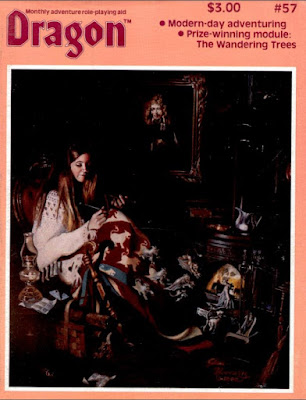

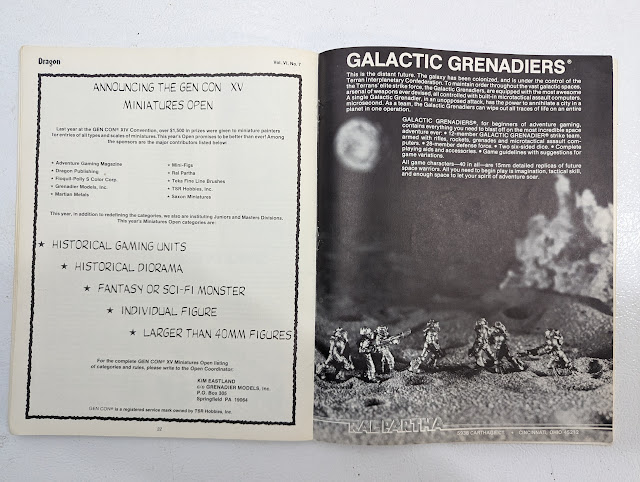

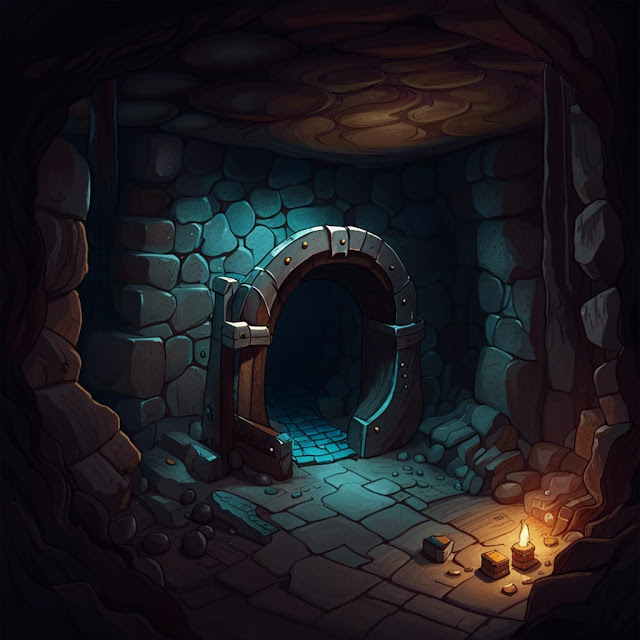
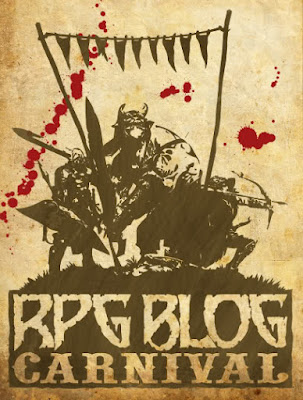

Fairy_Legends_p0239-dullahan.jpg)

